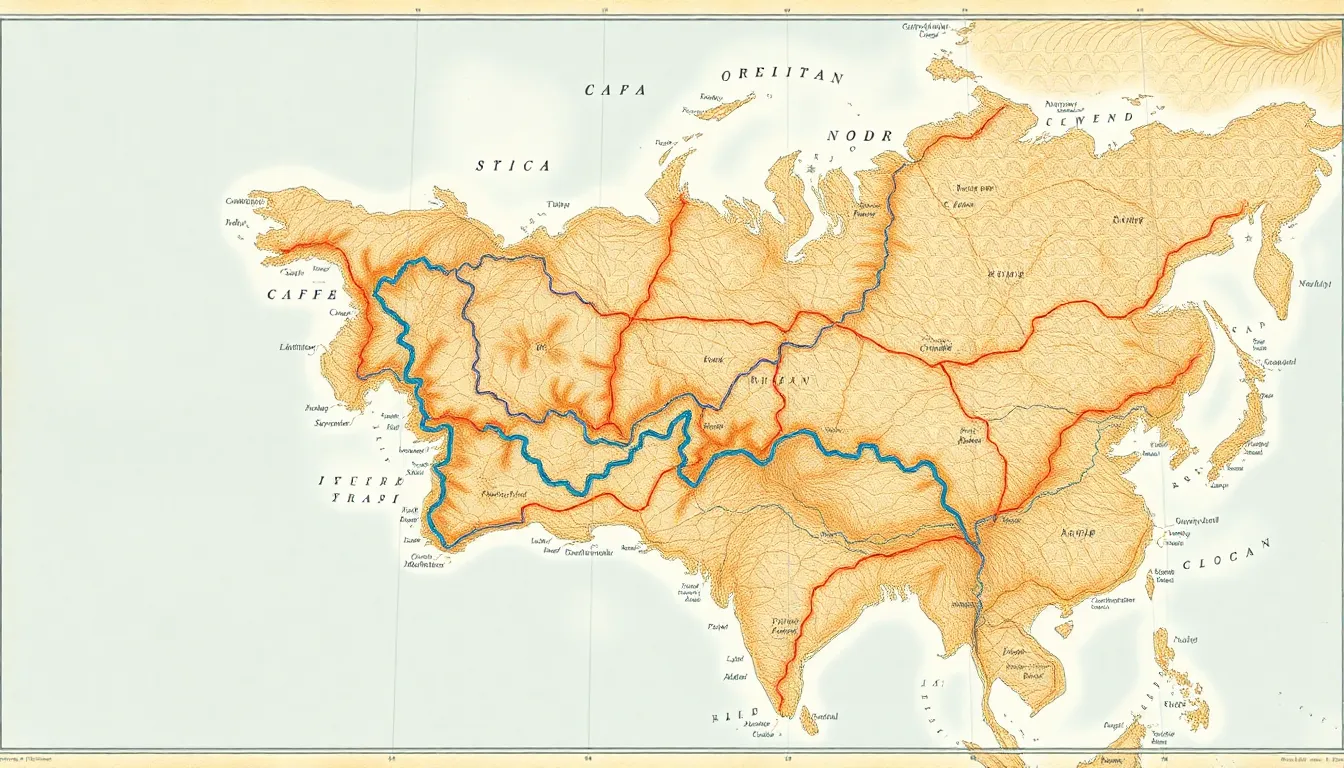Political boundaries shape not just maps but also the very fabric of society. They dictate where one nation ends and another begins, often sparking debates that could rival a soap opera in drama. From the jagged edges of a country’s borders to the invisible lines that define local governance, these boundaries influence everything from laws to cultural identity.
Table of Contents
ToggleUnderstanding Political Boundaries
Political boundaries play a crucial role in shaping interactions between countries and communities. These borders define territories and influence many aspects of life such as governance, law enforcement, and cultural heritage.
Definition of Political Boundary
A political boundary marks the geographical limits of a state’s authority. These boundaries arise from historical treaties, wars, and negotiations. Countries often establish borders using natural features like rivers and mountains, while others rely on artificial lines drawn on maps. The concept also includes sub-national divisions, which impact local governance and resource management.
Importance of Political Boundaries
Political boundaries affect international relations and trade significantly. They influence everything from economic policies to migration patterns. Borders establish unique legal systems, creating disparities in rights and regulations across regions. Additionally, cultural identities often align with these boundaries, shaping social dynamics and community engagements. Understanding these relationships enhances insights into global politics and regional conflicts.
Types of Political Boundaries

Political boundaries can take on various forms, each with distinct characteristics and implications. Understanding these differences is crucial for analyzing their impact on society.
Geometric Boundaries
Geometric boundaries rely on straight lines and fixed coordinates. Often established through treaties, these lines might divide regions without considering natural features. Countries like the United States and Canada employ geometric boundaries along parts of their border. Problems can arise when geometric lines ignore cultural or environmental realities, leading to conflicts and disputes.
Physical Boundaries
Physical boundaries derive from natural features such as rivers, mountains, and lakes. These boundaries can be significant—examples include the Rio Grande forming part of the U.S.-Mexico border and the Himalayas separating India from China. Such boundaries often define areas of control and influence. Changes in the environment or climate can challenge physical boundaries, altering their effectiveness in maintaining territorial claims.
Cultural Boundaries
Cultural boundaries reflect differences in ethnicity, language, and religion. These boundaries often influence national identity and social cohesion. In regions like Eastern Europe, cultural boundaries can be complex, as ethnic groups often overlap. As communities evolve, cultural boundaries can shift, impacting migration patterns and societal interactions. The interplay between cultural identity and political boundaries shapes social dynamics significantly.
Historical Context of Political Boundaries
Political boundaries have a rich history shaped by various factors, including wars, treaties, and cultural interactions. Their formation reflects a complex interplay of geographic, social, and political factors.
Formation of Boundaries Through History
Boundaries often arose from political agreements resulting from conflicts and negotiations. Wars frequently resulted in territorial changes, redefining national limits. Treaties, like the Treaty of Westphalia in 1648, established foundational principles for state sovereignty, influencing modern state boundaries. Over time, leaders frequently drew lines based on political interests rather than cultural realities. Environmental features, such as rivers and mountains, sometimes served as natural divider. Historical migrations contributed to shifting borders, as populations displaced due to conflict sought new territories. This dynamic continues to affect contemporary border disputes around the world.
Impact of Colonialism on Political Boundaries
Colonialism significantly altered existing political boundaries, often disregarding indigenous territories. European powers frequently imposed arbitrary lines during the Scramble for Africa, leading to conflicts between ethnic groups. Colonizers focused on exploiting resources rather than considering cultural identities, disrupting traditional communities. New borders imposed by colonial rule created lasting tensions that persist today. These boundaries frequently disregarded ethnic, linguistic, and cultural divides, leading to fractured societies. Post-colonial states often faced challenges in nation-building due to inherited boundaries. Understanding these lasting impacts reveals historical grievances affecting current geopolitical conflicts.
Contemporary Issues Related to Political Boundaries
Political boundaries often lead to disputes and conflicts, reflecting historical grievances and cultural divides. Territorial disagreements arise in various regions, driven by nationalism or resource competition. For instance, the ongoing tensions between India and Pakistan over Kashmir exemplify how deep-rooted issues can manifest in daily confrontations. The South China Sea dispute illustrates how nations vie for strategic control, impacting relationships among regional powers. Such conflicts frequently result in international attention, influencing diplomatic ties and military readiness.
International organizations play a crucial role in managing political boundary issues. The United Nations often facilitates discussions to resolve territorial disputes, advocating for peaceful negotiations over military engagements. Regional alliances, like the African Union, engage in boundary disputes amid post-colonial contexts, seeking stability and cooperation. They promote frameworks like treaties and mediation efforts to mitigate tensions. These organizations provide platforms for dialogue, fostering understanding between conflicting parties and working toward sustainable solutions in border-related disputes.
Political boundaries are more than mere lines on a map; they shape identities and influence interactions on multiple levels. The complexity of these borders often leads to conflicts that reflect deep-rooted historical and cultural tensions. Understanding the nature of political boundaries is essential for navigating the intricacies of international relations and regional dynamics.
As societies continue to evolve, the challenges posed by these boundaries will persist. Efforts to address disputes and foster cooperation remain vital in promoting peace and stability. The ongoing dialogue among nations and communities will play a crucial role in redefining relationships and resolving conflicts rooted in these significant yet often contentious divisions.




